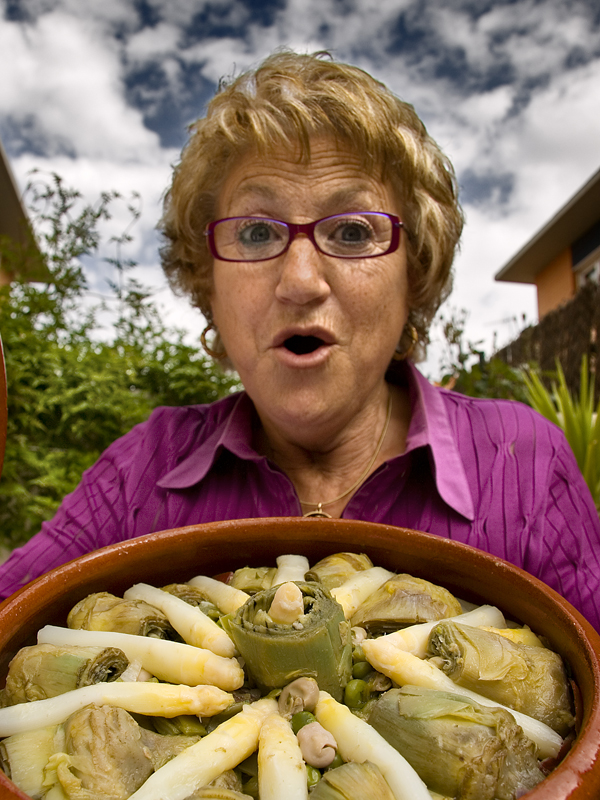25 oct, 2023
What to see and do in Navarre’s Ribera region: routes, desert and gastronomy
The Ribera region is a land of ochres, greens, reds and gold. The ochres can be seen in the Bardenas Reales desert, Tudela cathedral and the local monasteries; the greens in its famous market gardens, its olive groves and the Tarazonica rail trail; the reds in its D.O. Navarra wines and its festivals; and the gold in its olive oil and the sun that reigns in its skies most of the year.
BlogNavarre probably calls to mind valleys, forests and the Pyrenees, and perhaps the Way of St James or its famous castles, but beneath the strip that the Pyrenees and Central Navarre occupy, there are plainlands that you just can't imagine. That’s where the delicious vegetables Navarre is known for are grown, Europe’s northernmost desert silently awaits and the friendly, hospitable local people are ready to welcome you.
Arabs, Jews and Christians have passed through this land and they have all left their mark. In Tudela’s Jewish quarter, in the area’s Islamic dwellings and necropolises, in its Christian churches and monasteries...
Want some ideas so you can fall in love with Navarre’s Ribera region too? If it’s a yes, just keep reading.
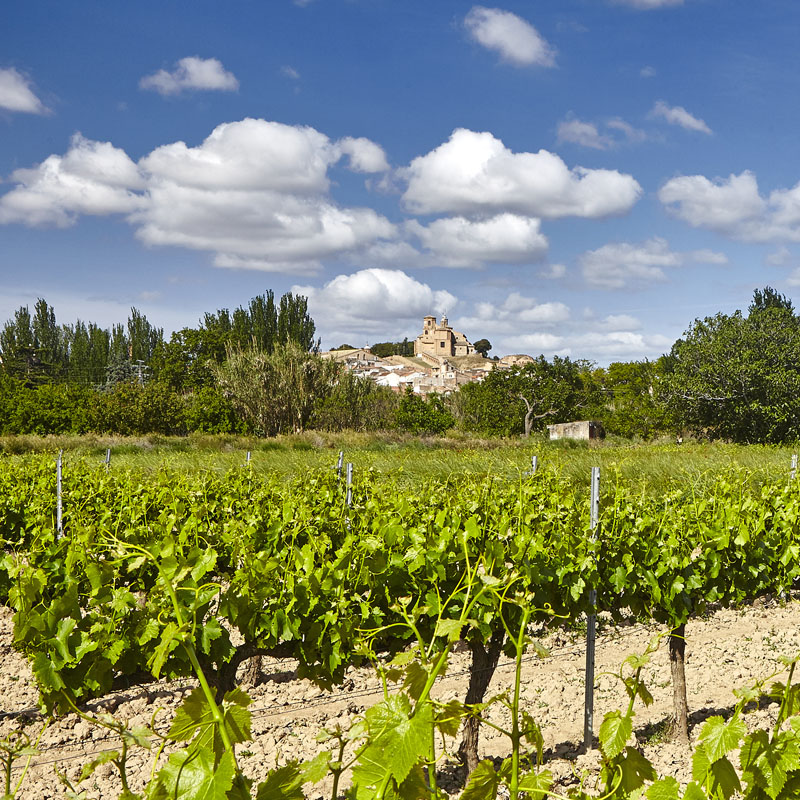
A geographical contrast: the Bardenas Reales desert (UNESCO)
Let’s start here, because who could imagine that, in the north of Spain, and in a region of mountains, forests and rivers, just a few kilometres to the south, you would find this immense desert landscape?
Geomorphology, flora and fauna: why Bardenas Reales is a unique desert
But it isn’t a sandy desert, it’s a vast expanse of gypsum, clay and sandstone, forming a mixture of flats and unbelievable formations, especially in La Bardena Blanca, the result of millions of years of erosion which have captivated many film and TV producers as settings for their movies and adverts.

42,500 hectares (45 km x 24 km across at its widest points) which are home not only to capricious geological formations but also a great wealth of flora and fauna, more typical of the African continent than of these latitudes, one of the reasons why this natural park was declared a UNESCO Biosphere Reserve.
How to discover the park: guided tours, car, bike and motorbike routes
And how can you discover Bardenas Reales? Well, you can do it under your own steam by car, by bike or on foot, but we recommend you take a guided tour because you’ll enjoy it so much more! You can choose between tours by buggy, 4x4, Segway, bike, car, on foot or even by motorbike. And you can go by day or at sunset, when the magic is tenfold and the photos you’ll be able to take are awesome.
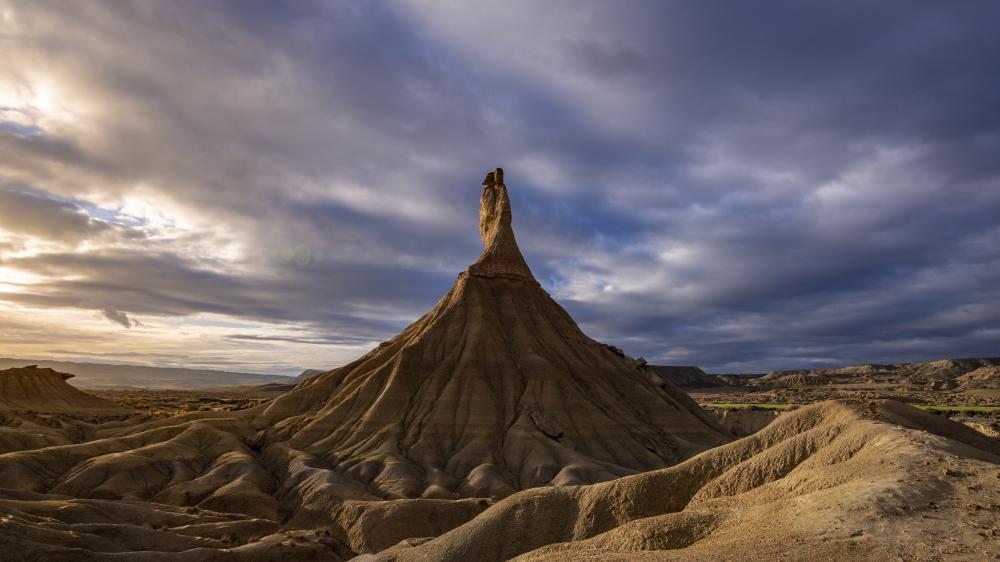
Tudela: The capital of vegetables, history and cultural mix
With 35,000 inhabitants, Tudela is considered the second most important city in Navarre.
The market gardens of La Mejana and the famous cuisine of the Ribera region
In its restaurants, you can taste the best vegetables from La Mejana, the markets gardens fed by the Ebro river where you can find borage, artichokes, cardoon, lettuce hearts, tomatoes, peppers and asparagus with the D.O. Navarra designation of origin, and which delight young and old alike.
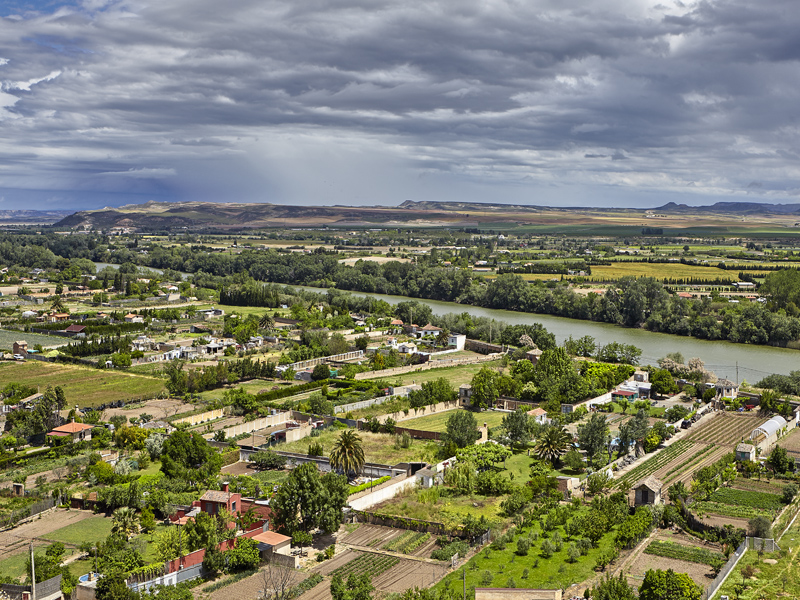
Traces of the Middle Ages: doorway of the Last Judgment, cloister and Plaza de los Fueros
Strolling through the streets of Tudela, you’ll discover the cultural mix which, over history, thanks to Christians, Arabs and Jews, has left its mark on the buildings, religious monuments and even the layout of the city centre. Don't miss the amazing portal into the cathedral depicting the Last Judgment and the Romanesque cloister, the city’s churches and palaces, and the beautiful Plaza de los Fueros, which was built in the 17th century and was first intended as a bullring. It’s presided over by the Clock house, has a pretty bandstand and its facades display the coats of arms of the towns and villages of the Ribera, so what could be better than taking a rest, sitting outside one of the bars lining the square and having a delicious snack?
Check out all the tours and activities in Tudela here.

Sendaviva: el parque de la naturaleza, una parada ideal si viajas en familia
Si viajas en familia, 25 km al norte de Tudela, se encuentra este imprescindible de tu viaje a la Ribera. En este divertido parque temático inspirado en la madre naturaleza (encontrarás a tu paso aves rapaces y multitud de animales exóticos y de granja) también existen atracciones para que todas las personas disfruten: las acuáticas como los Bumpers, el Splash, el Laberinto o las barcas del lago; la Gran Tirolina, el Bobsleigh o la Mansión Encantada, para los más atrevidos; y un montón de actividades para los más pequeños, además de algún show como el del Circo, que no querrán perderse.
Y si puedes acercarte durante el mes de octubre, descubrirás una faceta enigmática y terriblemente sorprendente… porque Halloween también te espera en Sendaviva.
- Sendaviva abre de marzo a noviembre (fechas concretas en su web)
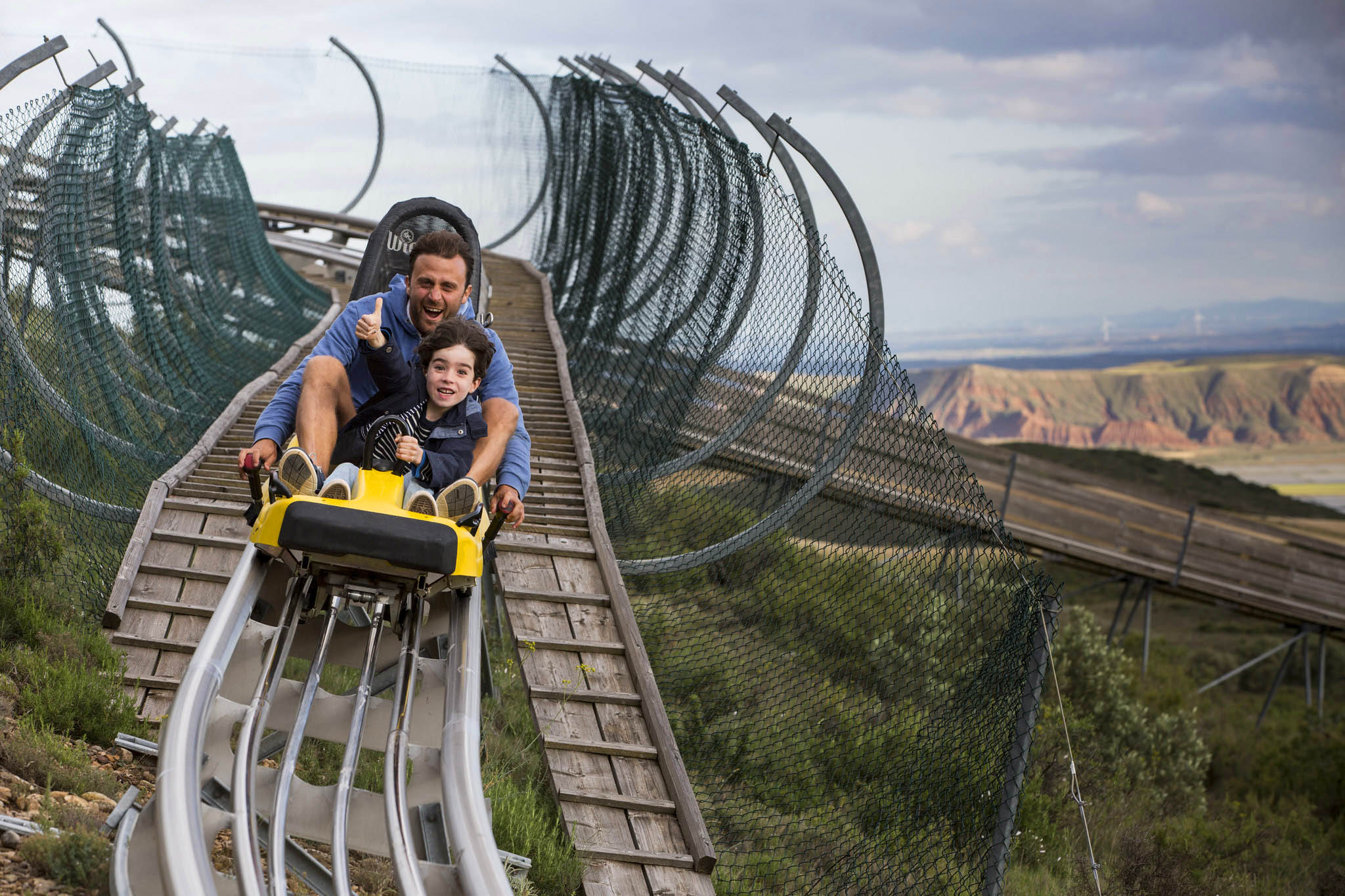
Monastic gems and castles: Cistercian art and fortification routes
Cistercian monasteries: Fitero, La Oliva and Tulebras (tours and retreat)
This relatively small part of Navarre is home to three gems of mediaeval architecture:
- The Monastery of Fitero, the first Cistercian monastery on the Iberian Peninsula, is an impressive mediaeval complex. It was declared a National Monument in 1931 and combines the robustness of the Romanesque and the elegance of the Gothic style. You can tour its cloister and abbey church, and see its important collection of Arabic caskets, mediaeval chests and a beautiful Gothic reliquary in Limoges enamel. Sign up for a guided tour or the dramatised tours by moonlight, a unique, unforgettable experience for lovers of mediaeval art.
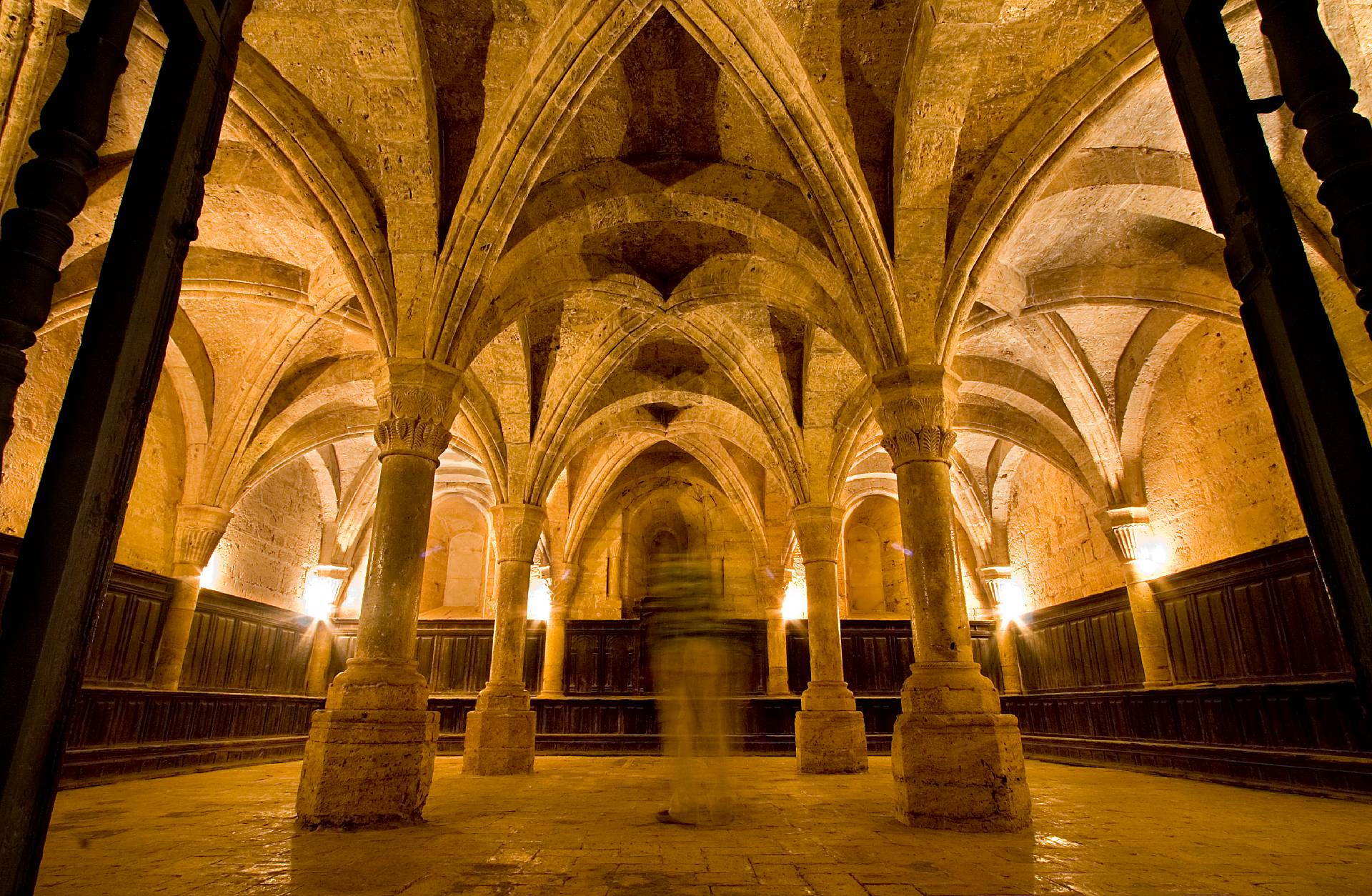
- The Monastery of La Oliva, declared a National Monument in 1880, is another beautiful example of Cistercian monastic architecture and is located in the north-eastern part of the Ribera, in Carcastillo. It has a chapter house and a beautiful abbey church from which you can access a beautiful 14th-century Gothic cloister. It’s home to some twenty monks who can be seen dressed in white robes walking through the cloister, praying or working in the vineyard. That’s right! You read that correctly; this monastery makes its own wine and you can buy it online.
If you feel like a few days of peace and spiritual retreat, this could be an option. The monks offer the chance to stay at their hostelry, spend a few days with them and take part in their liturgies.
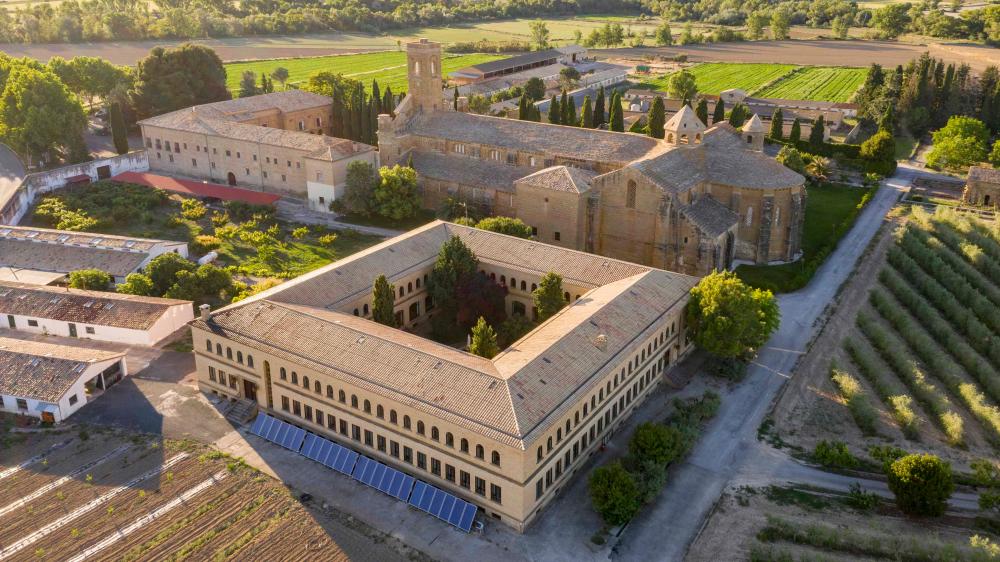
-
The Monastery of Tulebras: located in between irrigated fields on the banks of the Queiles river, was the first female Cistercian monastery in Spain, and has been a hub of religious life uninterruptedly since it was founded in 1157; quite remarkable! It’s home to a very active community of Trappist nuns. Not only do they make sweets, honey, natural cosmetic products and works of craft, but they also bind books and run a small hostelry. From an artistic perspective, the heritage the monastery contains, which makes it well worth a visit, are the church, cloister, abbatial palace, sacred art museum and the remains of an ancient Roman tower.
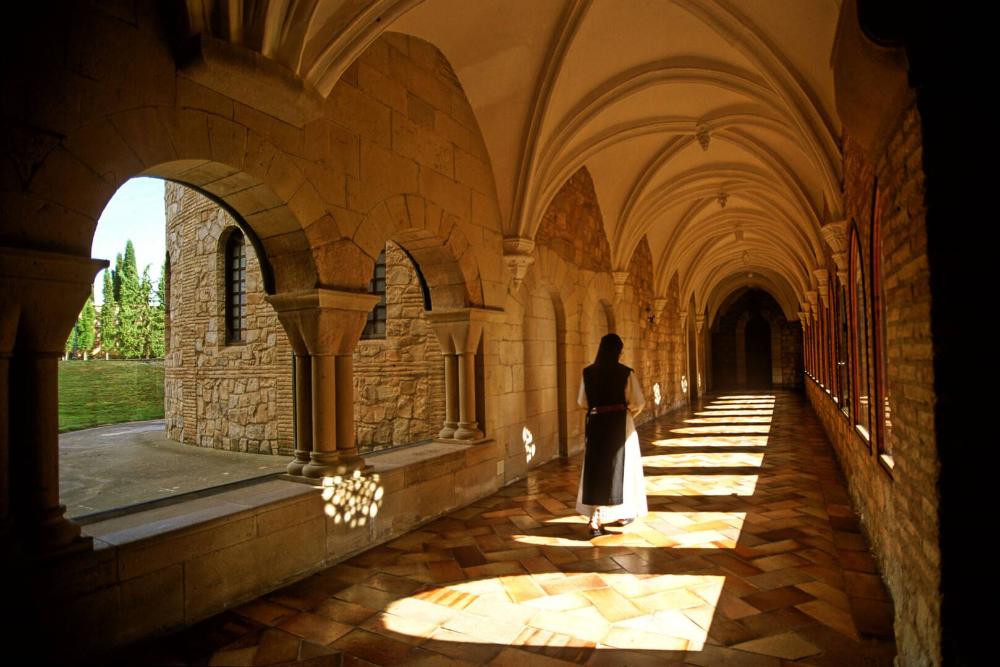
Mediaeval fortresses: tours of Cortes castle and Marcilla castle
And continuing with the area’s architectural heritage, you can also visit two fortresses:
One, Cortes castle, is in the southernmost village in Navarre. It’s a 12th-century building (Site of Cultural Interest since 1993), renovated in the 19th century, which preserves its keep, courtyard and defensive walls. Inside you can visit the permanent exhibition on the nearby Alto de la Cruz archaeological site, considered one of the most relevant Iron Age digs in Europe. Get to know all about it on the guided tour.
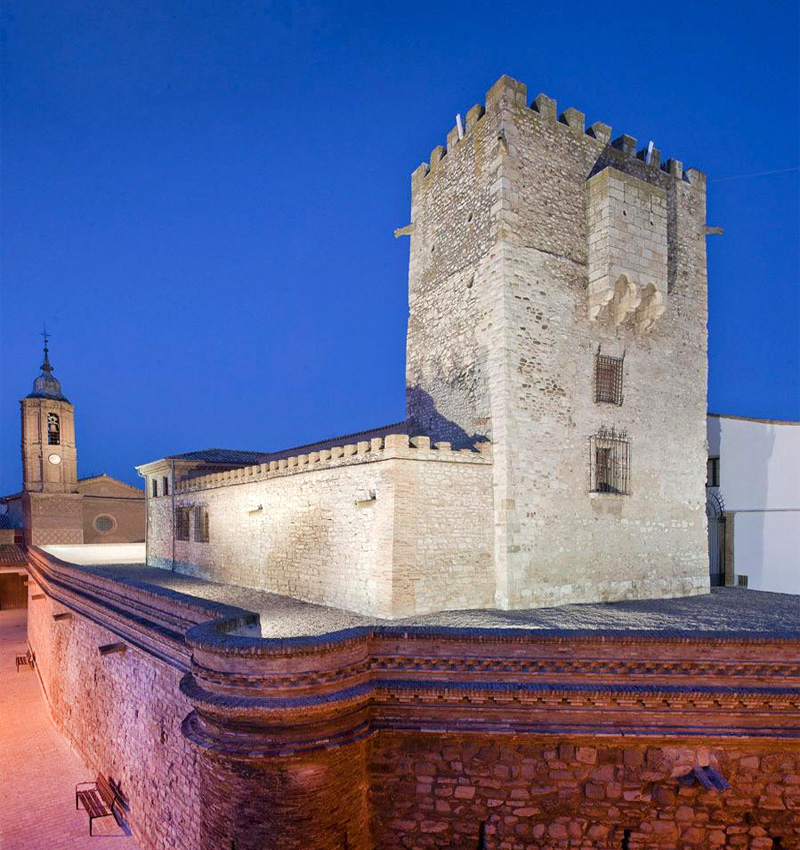
And the other is Marcilla castle, built in the 15th century in the Gothic style with brick walls, machicolations, towers, a moat and even a bridge leading the way in. Legend has it that El Cid’s sword Tizona was kept inside. Restored in 2012, it is currently home to the local council.
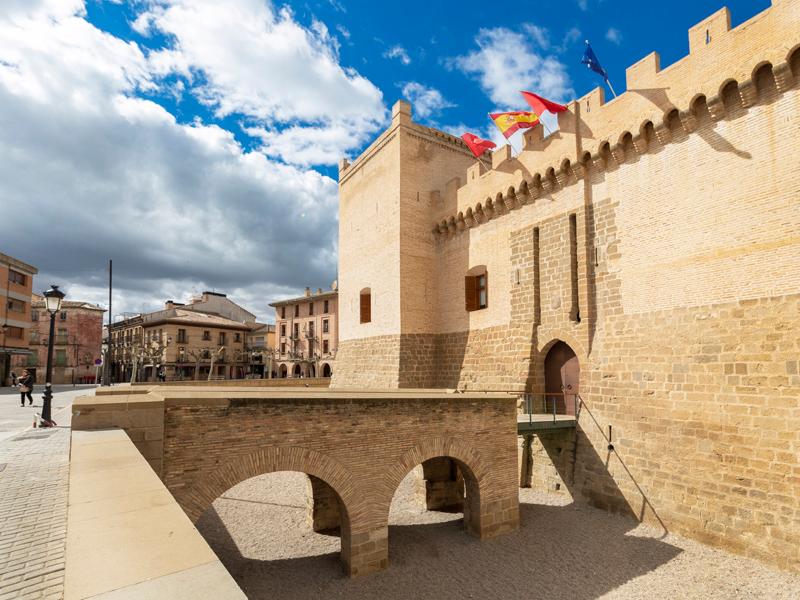
Beyond Tudela: the Baroque, thermal and Roman Ribera
Corella: the splendor of the Baroque and its Historical Days
The Baroque is alive in every corner of Corella: its old streets and palaces take us back to the 17th and 18th centuries, a time of true economic and social splendour, which left a good number of ancestral homes in the town, many emblazoned with coats of arms commemorating illustrious families: Sesma, Virto de Vera, Alonso, Escudero, etc.
And the town’s Baroque Good Friday Procession has been held here since 1710. It combines shoulder-borne floats with beautiful scenes from the Passion of Christ and a performance staged by the local population (around 1,000 people take part). It was declared of Tourist Interest in 1967 for being one of the most characteristic and original processions in Spain. Don’t miss the exciting moments when Jesus enters Jerusalem, when he’s arrested and when he appears to his Mother after rising from the tomb. You’ll be just as taken aback by the halberdiers as you are by the penitents dragging their heavy chains through the narrow streets of the historic centre.
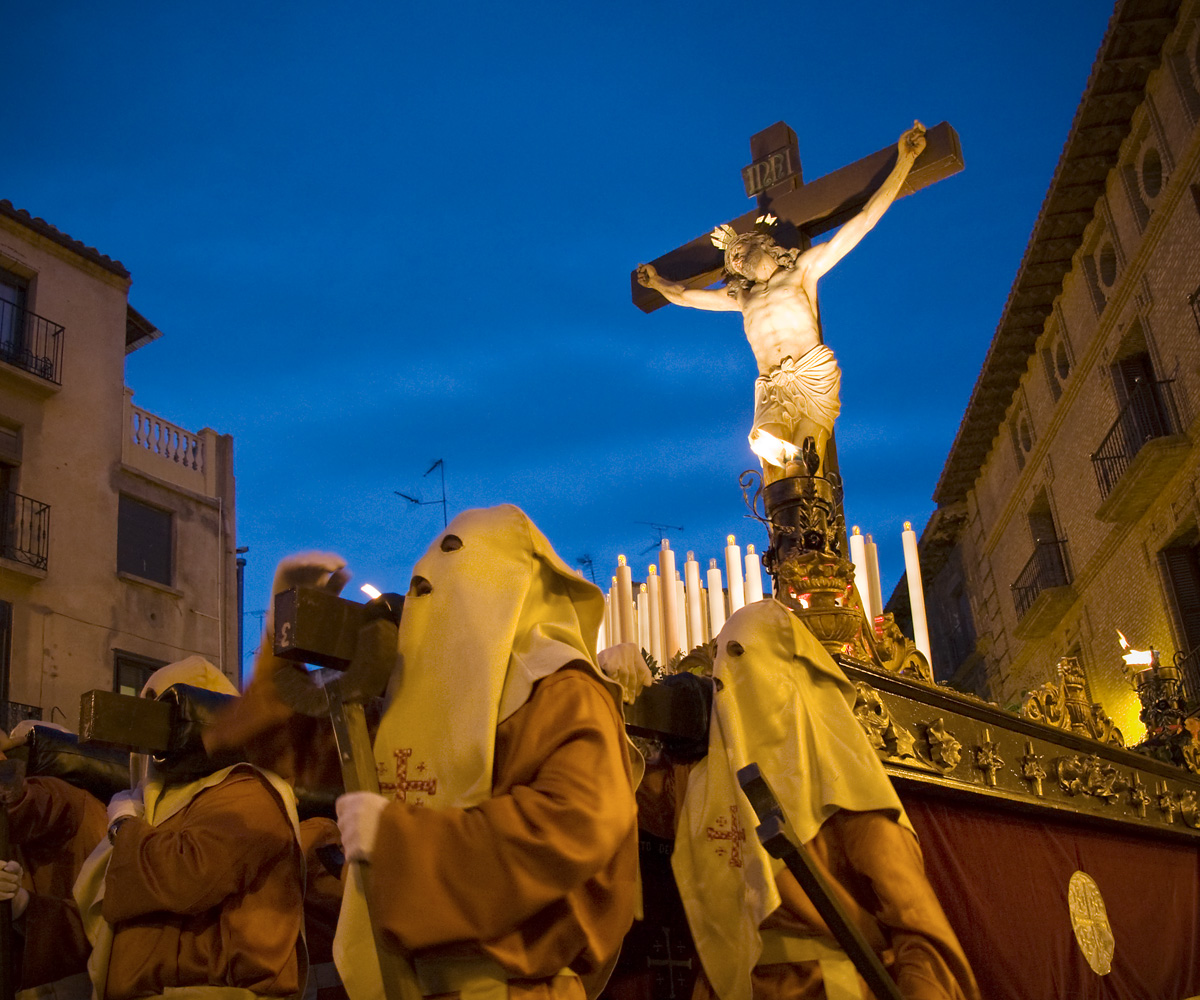
And to discover the town in the grand style it deserves, nothing better than coming during the "Corella Baroque Days", held every year over a weekend at the end of October, and enjoying the market, recitals, tours, workshops and performances, all centring on the Baroque.
If you're travelling as a group and want to get to know Corella first hand from the locals, don’t miss one of the highly original dramatised tours!
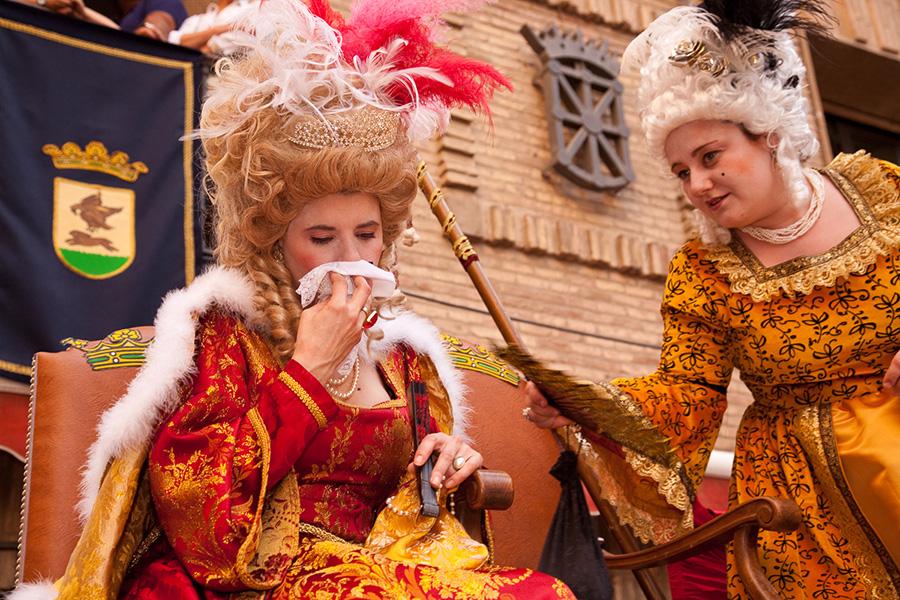
Fitero: centuries-old spa, Bécquer and the Roscas circuit
Let’s start with the village’s impressive monastery, the jewel of Cistercian art described above.
Then it’s on to the centuries-old spa, 3 km from the village, which takes is its name from the poet who enjoyed the thermal treatments there on many occasions, Gustavo Adolfo Bécquer. You can get a complete overhaul there because in addition to making the most of the properties of the waters, of which there are records dating back to Romans times, you can also book a long list of treatments which will leave you feeling as fresh as a daisy and then take a dip in the outdoor pool, which is at 34ºC all year round.
And, finally, there’s a very special trail here: the Roscas (screw thread) circuit, the details of which you can find in the section on trails and nature.
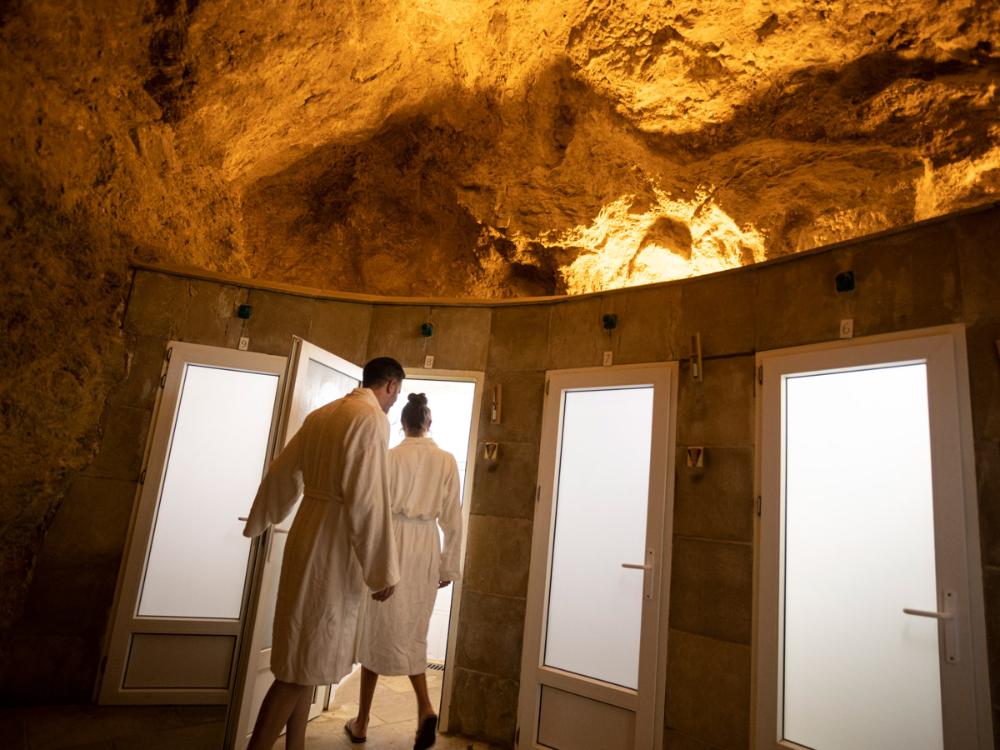
Cascante: Roman sites and the Tarazonica rail trail
Of Roman origin (its original name was Cascantum), this town offers some natural attractions such as the Lor wetland, a place for fishing, walking and bird watching, or the Tarazonica rail trail, which passes right by it. There’s also something of great interest for the artistically minded: the Church of Nuestra Señora del Romero, whose long run of arcaded steps is well worth a photo.
And after the tour, fancy a buggy ride through ancient olive groves? Perhaps a guided tour of a local winery? Or what about a dip at the town’s thermal-recreational centre? Check out here all the things going on in Cascante.
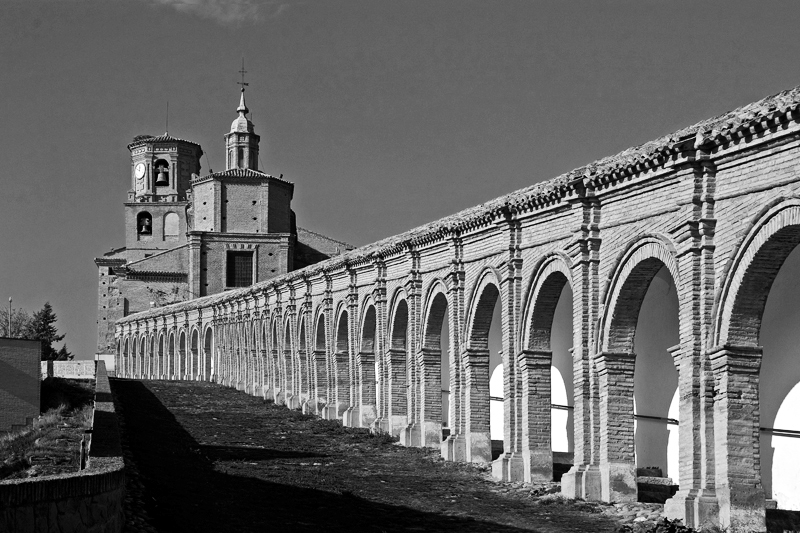
Trails and days out in nature: rail trails and oxygenating walks
Having discovered the art of the Ribera, how about an oxygenating walk to
invigorate the body and earn the delicious feast you can treat yourself to later?
The must-do routes: Tarazonica rail trail, the Roscas circuit and Alhama
Here’s a selection of some of the walks in the area, each with a charm of its own:
- The Tarazonica rail trail: a fairly flat 22-km route past market gardens and gentle landscapes which starts in Tudela and ends in Tarazona (Zaragoza) that you can do on foot or by bike.
- The Roscas (screw thread) circuit: an easy 8-km path which starts in Fitero, passes the Cave of La Mora (which appears in one of Bécquer’s legends) and ends up at a surprising massif of uniquely shaped rocks. Grab your camera, you won’t want to miss out on a picture!
- Health and cultural route along the Alhama river: a 38-km two-way route you can cover by mountain bike or on foot through the valley of the Alhama river taking in Corella, Cintruénigo, Fitero and Baños de Fitero (spa). The beautiful landscape is one of curious contrasts: market gardens, riverside copses, artificial ponds, dryland grainfields, olive and almond trees, and striking views of Mount Moncayo.
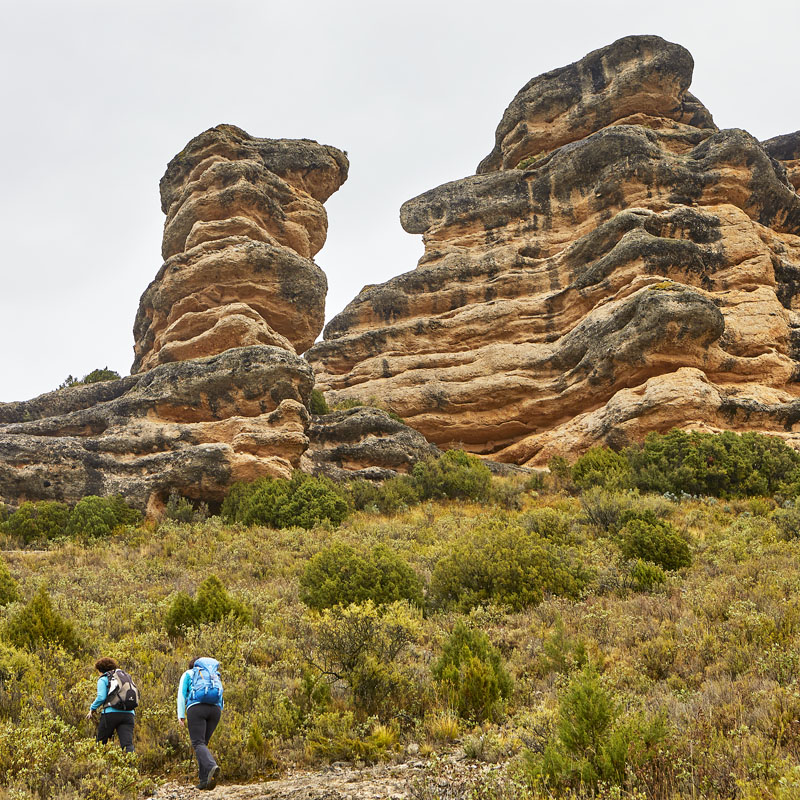
- The Cabezo del Fraile route in Bardenas Reales: a moderately difficult 5.5-km walk in La Bardena Negra up to the top of the Cabezo del Fraile rock formation. The view from up there is stunning.
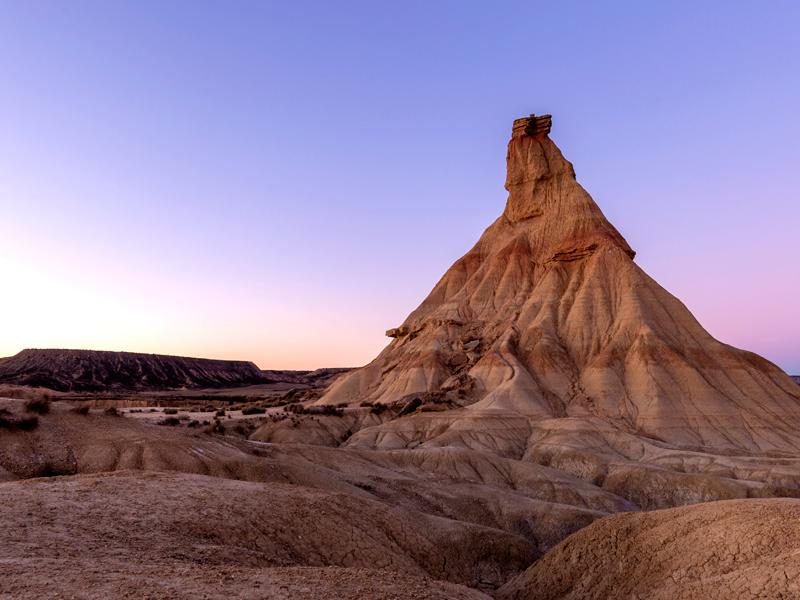
And as for nature, you already know that the Bardenas Reales Natural Park heads the list, but there are other natural spaces too, in this case aquatic ones:
- The Lor wetland (less than 1 km from Cascante): a beautiful pond where you can take a relaxing 2-km perimeter walk enjoying not only the waterscape but also the olive groves, grainfields and vineyards around it. You can fish if you have a licence and observe the multitude of birds that pass through all year round, some with such interesting voices as the great bittern, the wigeon and the black-headed gull. If you feel like exploring the area by buggy or quad, check out this activity.
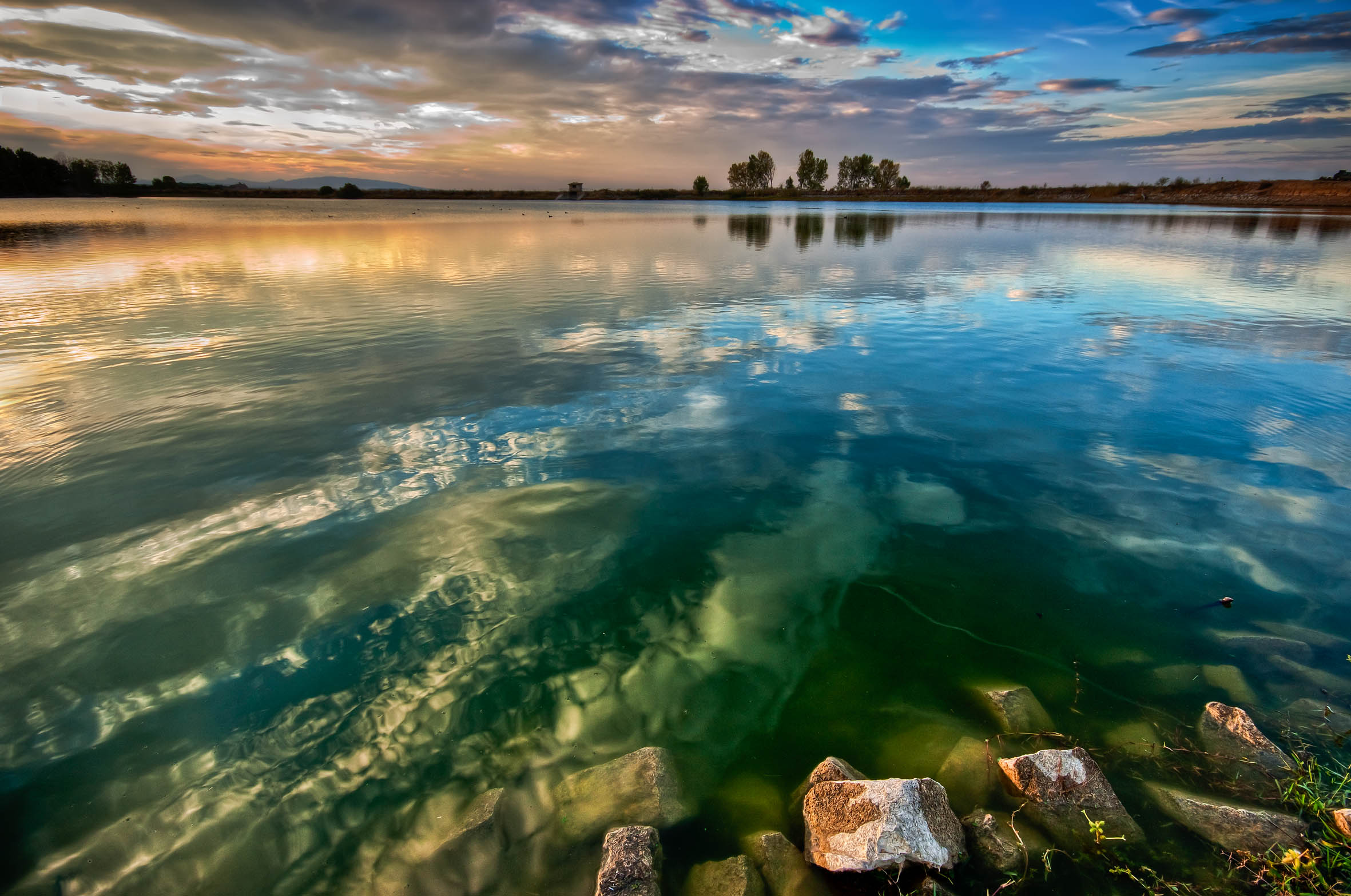
- El Bocal Real (7 km from Tudela): a unique place to spend the day, go for a stroll and take in Charles V’s palace, the Neoclassical chapel, the 500-year-old oak tree declared a Natural Monument and the weir built in the 18th century that marks the start of the Imperial Canal of Aragon, which allowed goods and passengers to be transported between Tudela and Zaragoza before the arrival of the railway.
In Tudela and fancy a guided tour of this unique place?
- The Pulguer pond nature reserve, just 5 minutes from Tudela and Cascante, has been fitted out as a natural swimming pool and is ideal for cooling down in summer. Its warm salt waters are a refuge for birds such as the common stork and in addition to taking a swim, you can also have a go at water sports in the marked-off area.
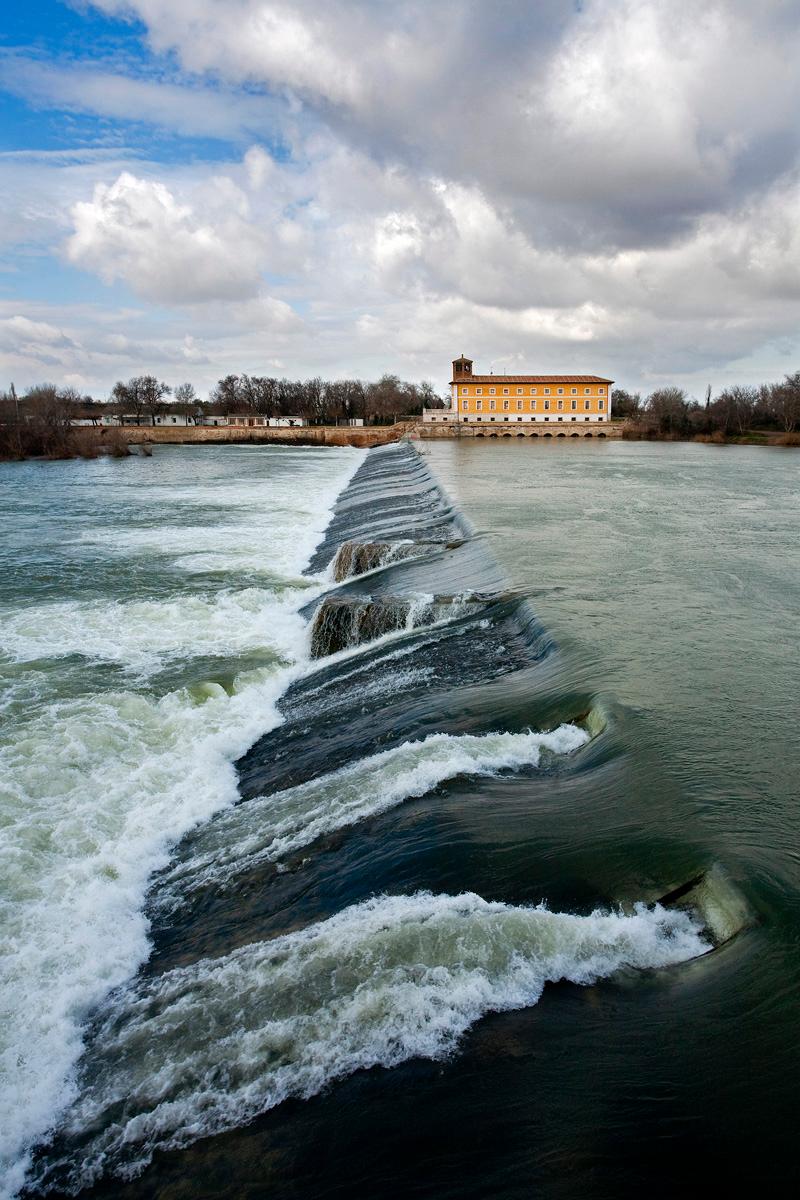
The gastronomy of the Kingdom: the flavour of home cooking and haute cuisine with vegetables
And what better way to round off your trip to the Ribera than trying its famous vegetables? The Mediterranean climate and the Ebro river –and, without a doubt, the loving care and green fingers of the local farmers– are the architects of the list of colourful, healthy and fine fruits of the earth with which grandmothers have so often prepared menestras de verduras (vegetable stews), cardoon or artichokes with ham, borage with potatoes, chard with carrots, fresh tomatoes and asparagus, roasted peppers with olive oil and garlic... Yum yum, the flavours of home cooking made with locavore products served in family restaurants. The same products with which great chefs also have their fun, coming up with amazing dishes, flavours and textures.

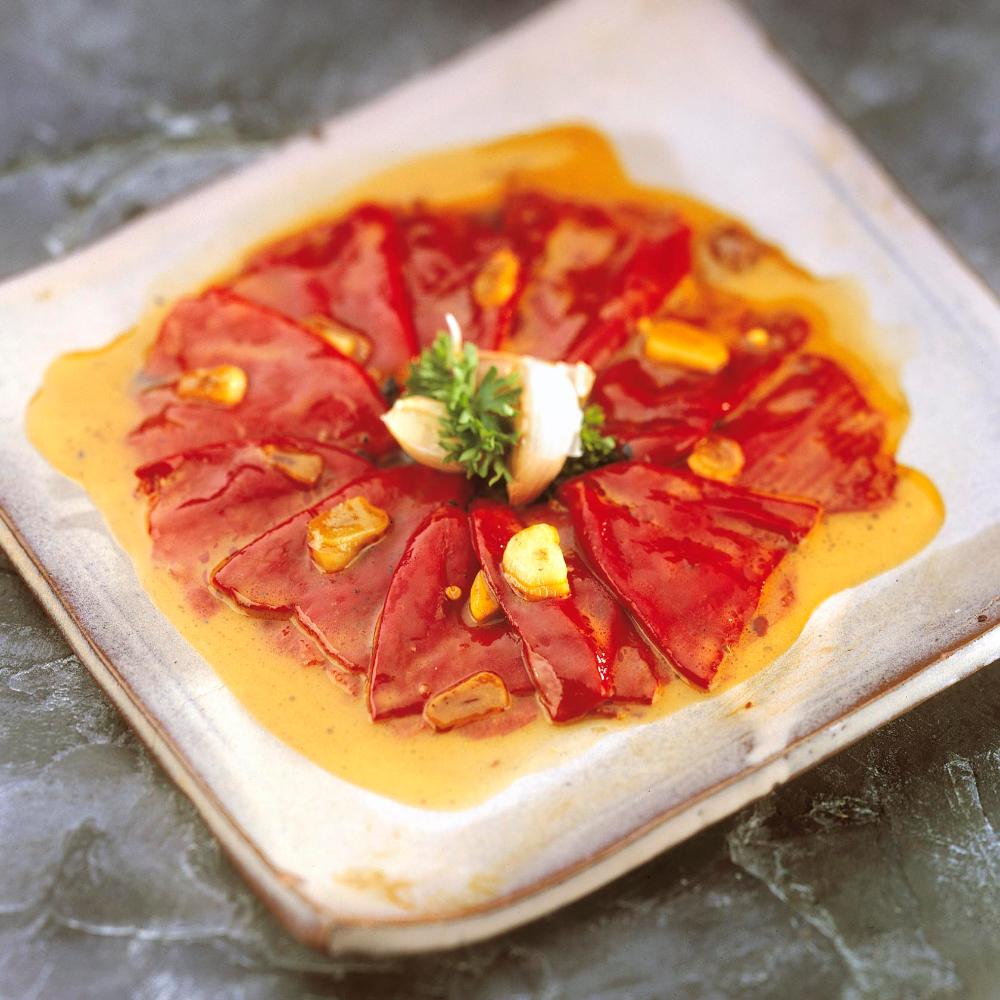
So we wholeheartedly recommend that you don’t leave the area without trying some of the typical and delicious local vegetables in any of the restaurants in the area and that you take some back home with you canned to surprise your family and friends the next time you meet up.
Another option is to visit one of the area’s gastronomic festivals, where there are always markets selling local produce, tours of monuments, wineries and trujales (olive oil mills), and workshops to learn how to make some of the best local dishes.
And if you’re left wanting for more, check out the entire calendar of events in the Ribera region here.
Have we managed to whet your appetite for the colours of the Ribera and made you want to come and see for yourself? If you need even more excuses, check out all the plans different tourism companies have put together for you.
We hope we have, see you soon!
